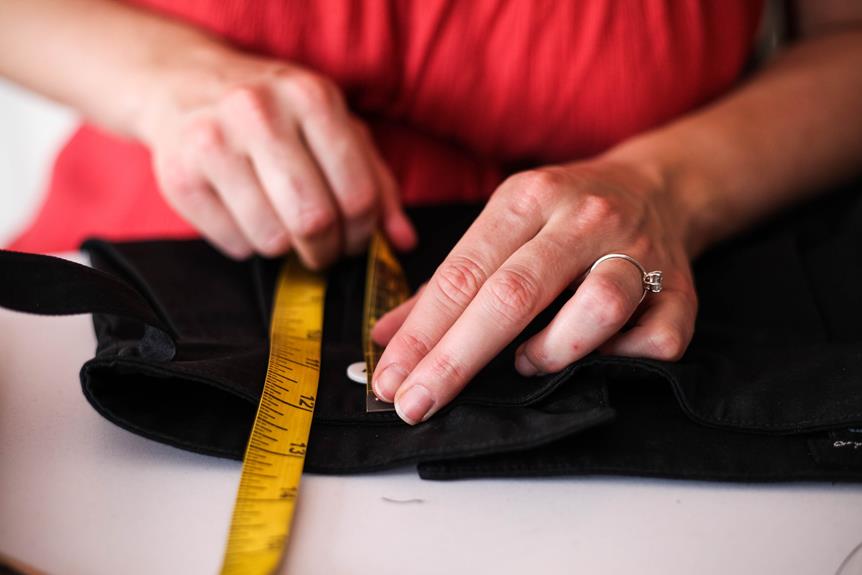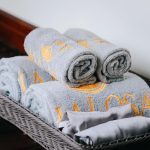Ever felt like you're trying to measure fabric width with one eye closed?
It's time to unravel the mystery and master the standard fabric widths on a roll. Knowing the exact measurements will ensure your sewing or crafting project turns out just the way you envision.
Let's dive into the world of fabric widths and make sure you're equipped with the knowledge you need.
Key Takeaways
- The standard fabric width for most rolls is 44/45 inches, but there are international variations with some countries producing fabric in 36-inch widths and others adhering to the 60-inch standard.
- Understanding fabric width variations helps in planning projects effectively and purchasing the correct amount of fabric.
- Accurate measurement of fabric width across the selvage ensures precise results and captures the usable width of the fabric.
- Standard fabric widths are important for manufacturers as it impacts manufacturing processes, cutting efficiency, production costs, and ensures consistency in quality and quantity.
Understanding Fabric Width Standards
When you're working with fabric, it's essential to understand the standard width measurements to ensure accurate and efficient use in your projects. Industry regulations dictate that the standard width for most fabric rolls is 44/45 inches.
However, it's crucial to note that international variations exist, with some countries producing fabric in 36-inch widths, while others adhere to the 60-inch standard. Understanding these variations is vital, especially if you're sourcing fabric internationally or working on projects that require specific width measurements.
Being aware of industry regulations and international variations will help you make informed decisions when purchasing fabric for your projects. It will also ensure that you can plan and execute your designs with precision, avoiding any miscalculations due to differences in fabric width.
Common Fabric Width Measurements
Measuring fabric width requires understanding the variations and standards in the industry to ensure accurate use in your projects.
When it comes to fabric width measurements, there are some common standards and variations that you should be aware of. The most common fabric width variations are 45 inches, 54 inches, 60 inches, and 72 inches. These are the widths you'll most frequently encounter when shopping for fabric. While these are the standard measurements, it's essential to note that some fabrics may have unique widths due to manufacturing processes or specific intended uses.
Understanding these variations can help you plan your projects more effectively and ensure you purchase the correct amount of fabric.
It's also crucial to be aware of industry standards when it comes to fabric width measurements, as this knowledge can help you make informed decisions and avoid potential issues with your projects.
Measuring Fabric Width Accurately
To ensure accurate measurements, always measure fabric width across the selvage using a reliable measuring tape. This method guarantees precise results and helps you understand the fabric width variations, especially when dealing with irregular fabrics. When measuring irregular fabrics, such as lace or mesh, it's crucial to take multiple measurements at different points along the selvage to account for any inconsistencies in the weave or pattern. Additionally, when working with fabrics that have a directional print or nap, make sure to align the selvages and measure from edge to edge to accurately capture the usable width of the fabric.
To further illustrate this point, consider the following table, which demonstrates how to measure fabric width accurately across different types of irregular fabrics:
| Fabric Type | Measurement 1 (inches) | Measurement 2 (inches) |
|---|---|---|
| Lace | 36 | 35 |
| Mesh | 45 | 44 |
| Directional Print | 60 | 59 |
Importance of Standard Fabric Widths
You need to understand the importance of standard fabric widths to make informed fabric choices for your projects.
Industry implications of standard fabric widths are significant as they impact manufacturing processes, cutting efficiency, and production costs. Standard fabric widths ensure consistency in quality and quantity, which is crucial for manufacturers to streamline their operations.
For consumers, understanding standard fabric widths is essential for making informed purchasing decisions. Knowing the standard widths can help you estimate the amount of fabric needed for your projects accurately, reducing waste and cost. Additionally, it can also influence the design and planning of your projects, as different standard widths may require different cutting and sewing techniques.
Moreover, having knowledge of standard fabric widths allows you to compare prices and quantities effectively, ensuring that you're getting the best value for your money.
Whether you're a manufacturer or a consumer, being familiar with standard fabric widths is crucial for both industry implications and consumer applications.
Tips for Estimating Fabric Needs
Understanding standard fabric widths is essential for accurately estimating your fabric needs for any sewing or crafting project. When estimating yardage, it's helpful to visualize the fabric's width in relation to the pattern pieces or project requirements.
One useful tip is to compare the fabric width to a standard measurement, like 45 inches. For example, if the fabric you're considering is 60 inches wide, you can roughly estimate that you'll need 25% less fabric than the pattern suggests for a 45-inch width. This visual comparison can save you from purchasing more fabric than necessary.
Another helpful tip is to lay out the pattern pieces on a flat surface to get a better sense of how the fabric will be utilized. By doing this, you can more accurately estimate the yardage needed, taking into account any pattern matching, directional prints, or fabric layout considerations.
These simple but effective strategies for estimating fabric needs can help you make more informed decisions and avoid wastage in your sewing and crafting projects.
Frequently Asked Questions
Are There Any Special Considerations for Measuring the Width of Stretchy or Elastic Fabrics?
When measuring stretchy or elastic fabrics, consider their ability to stretch and contract. Take fabric stretch measurements both along and across the grain to account for fabric width variations. This ensures accuracy when working with these types of materials.
How Do Different Fabric Types (Such as Knits, Wovens, or Specialty Fabrics) Affect the Standard Fabric Width Measurements?
Different fabric types like knits and wovens affect fabric width measurements. Fabric stretch impacts standard measurements, especially with stretchy or elastic fabrics. Knits can stretch more than wovens, impacting the standard width on a roll.
Can the Standard Fabric Width Vary Between Different Manufacturers or Suppliers?
Yes, the standard fabric width can vary between different manufacturers or suppliers. This variation can impact fabric quality and consistency, which in turn affects customer expectations and specifications. It's important to consider these factors when sourcing fabrics.
Are There Any Industry Standards for Fabric Width Measurements That Customers Should Be Aware Of?
When it comes to fabric width consistency, customers expect industry standards to ensure uniformity. Knowing these standards can help manage your expectations and make informed purchases, ensuring the fabric meets your specific needs.
How Do Irregular or Non-Standard Fabric Widths Affect Pattern Layout and Fabric Usage?
When dealing with irregular fabric widths, it can impact pattern layout and fabric usage, especially with stretchy fabrics. Different fabric types and industry standards may influence measurements, so it's important to stay aware of these variations.
- Tetron Fabric Vs Other Fabrics: a Comparative Analysis - June 17, 2025
- Creative Uses for Tetron Fabric in Fashion and Home Decor - June 17, 2025
- Tetron Fabric HS Code: Import and Export Information - June 17, 2025







